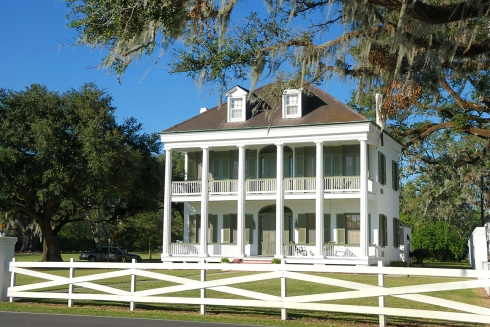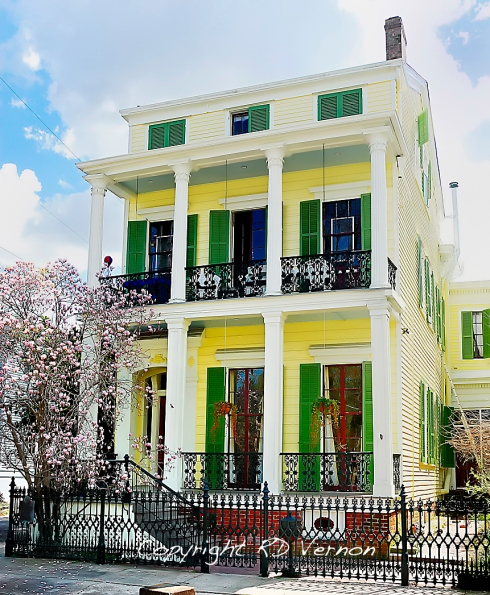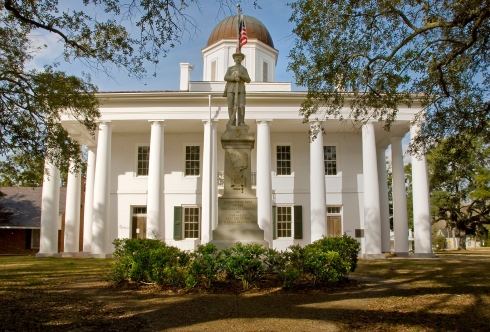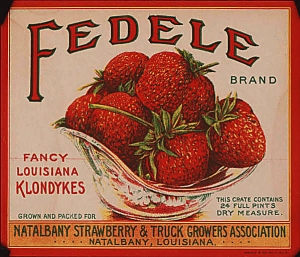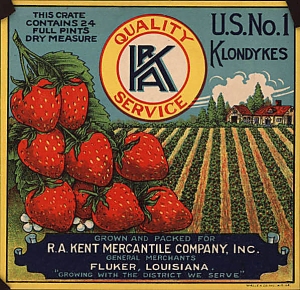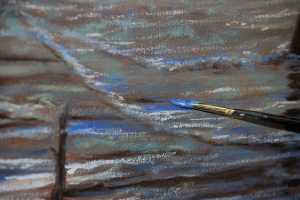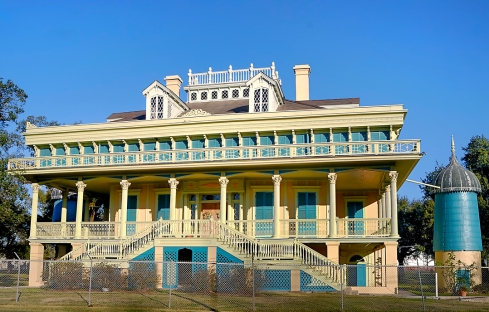
San Francisco Plantaion Home, Built in the 1850s, is One of the Most Unique Plantation Homes on Historic River Road
If you can find your way to LaPlace or to Reserve, or to Garyville, Louisiana, then you can find your way to The San Francisco Plantation Home. If one goes by way of Reserve and LaPlace you go to the highway that turns into River Road – just turn right and it will not be too long before you arrive and you will not pass it up! You will have to slow down and curve around the house as you pass. The town of Garyville also claims San Francisco Plantation but if you go that way you will have to make a left on to River Road.
The first time I saw San Francisco it surprised me how close it was to the road. The flood of 1927 prompted the building of the Mississippi River levees. The river levee took the land between San Francisco and the river. The home is a beautiful structure. I was determined to get a picture from the front – even with the road. The house is separated from the road by a chain link fence. I thought this was not particularly in good taste but after realizing that one could not see the grand home from the road with a “solid fence” it did not look as bad as I first thought. As it was I was able to climb up the levee a ways and to take pictures of the front. Even with the fence I find the place intriguing. Also, since the levee is a result of the 1927 flood it too takes on historical importance in the story of Louisiana. The levee was to have destroyed San Francisco but somehow the locals got organized and stopped the planned destruction – thus the curved road so close to the plantation home.
Unique among all plantation houses in its foundation structure, plan, and silhouette, San Francisco is unquestionably a landmark as that term is popularly understood. It has been pictured in American, British, and Swedish periodicals as one of the major sights of the New Orleans area. The exterior combines a variety of architectural motifs in a design dominated by an immense and ornate roof construction. The interior is notable for the paintings which ornament the ceilings and door panels of the parlors. The attic area is Victorian in design and because of it many refer to the structure as a “Steamboat Gothic.” I am not familiar enough with Steamboats to make a determination but I can tell you that it is very unique and a pleasure to see and to photograph. The unique color scheme is “icing on the cake” as far as I am concerned.
One must not forget that the reason for the home in the first place is sugar. Although the home is grand in scale, and appearance, the families that owned the plantation could never make a good go of a sugar plantation. It seems that at critical times in its history that war, depressions, death and bad luck inflicted a toll on those that would seek to make a go of growing and manufacturing sugar. Still the home fits into a cultural landscape that was shaped by the cultivation of sugarcane and the production of sugar.
In the 1970s Marathon Oil purchased the property and the house. The San Francisco Plantation Foundation was created and the home underwent a massive restoration. As scientific analysis of materials and structure were done, along with archival research, it was decided to that the home would be restored to the golden years just before the War Between the States. The house then became listed on the National Register of Historic Places.
Today the San Francisco Plantation remains a major attraction in Louisiana being visited annually by over 100,000 people. Although the house is antebellum in a chronological sense, it is certainly not typical of the period. Its style and coloration are totally distinctive, and its memories are now locked in time just prior to the War Between the States, when the house was at the height of its splendor.

